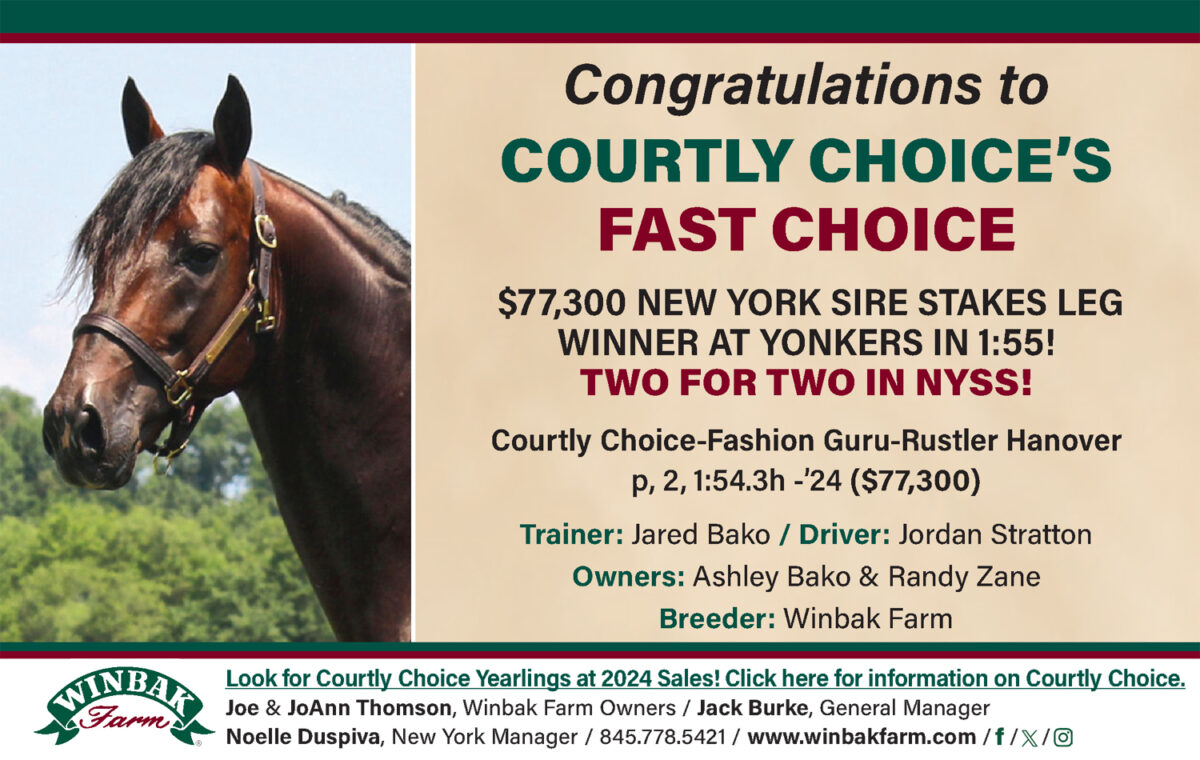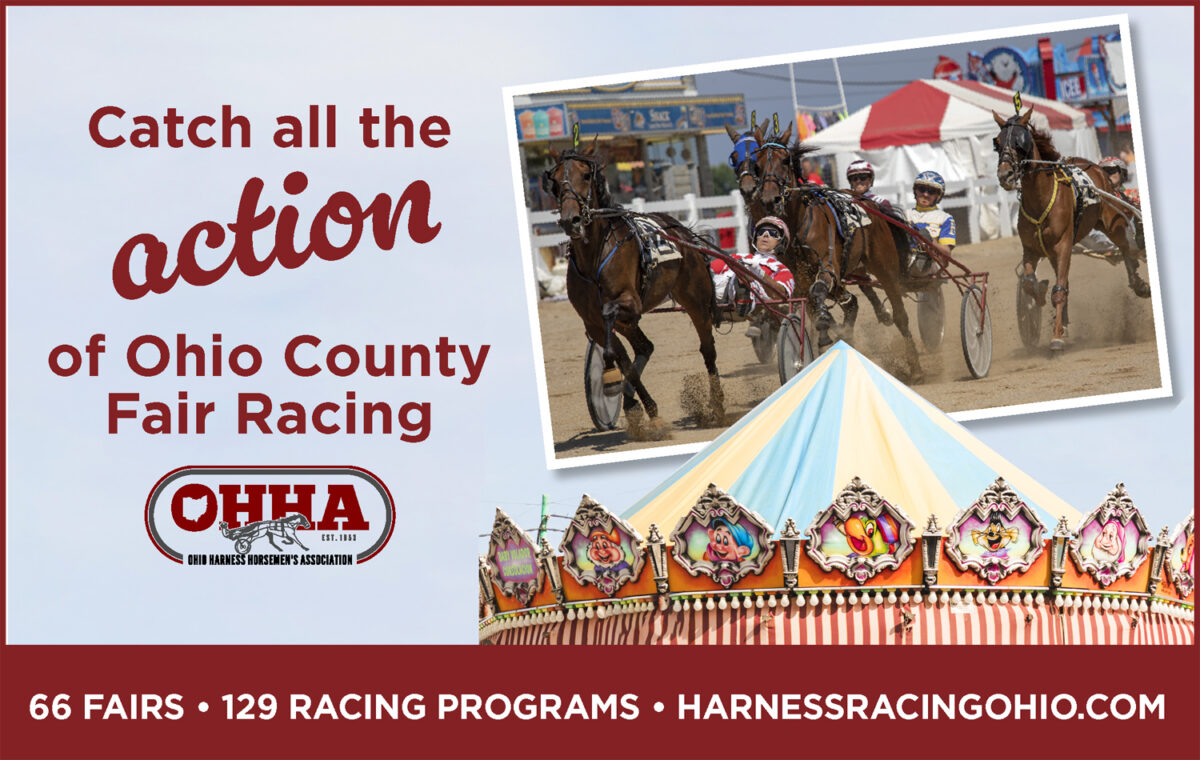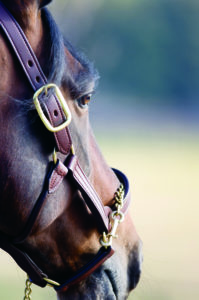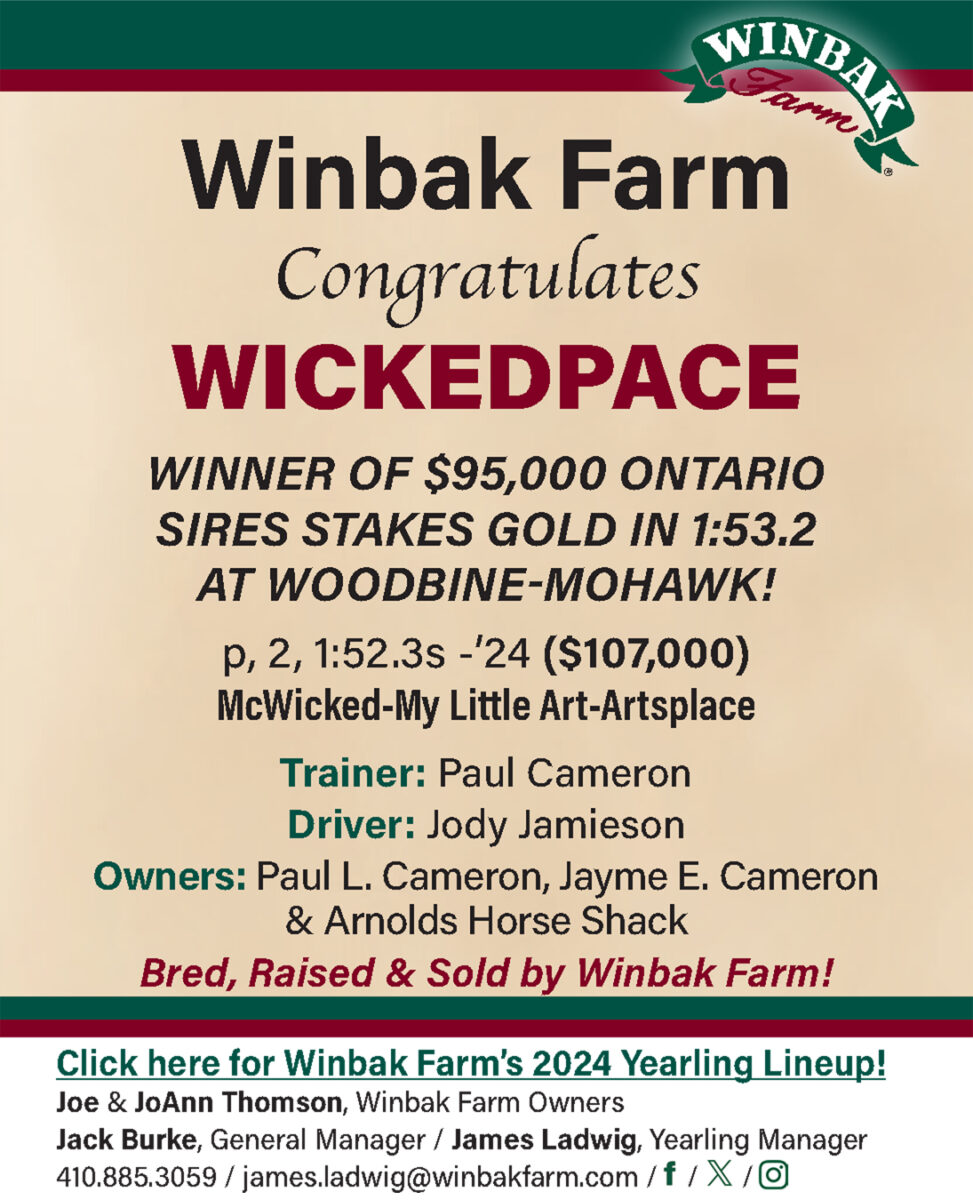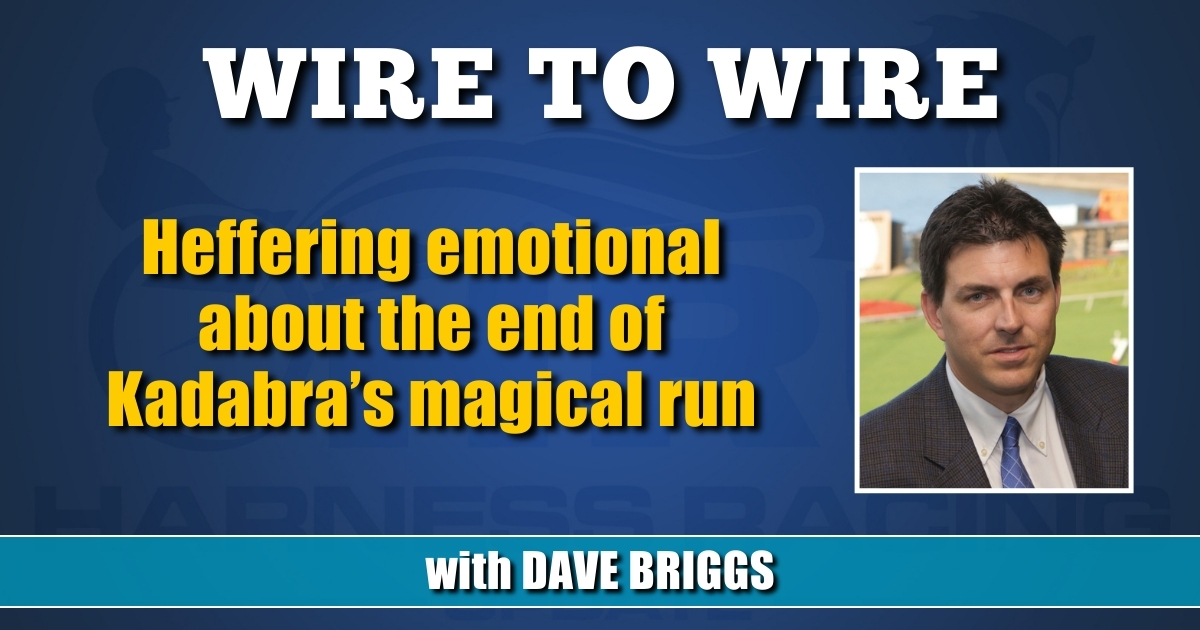

Heffering emotional about the end of Kadabra’s magical run
Kadabra was officially retired from stallion duty on Thursday at Tara Hills Stud due to injury, bringing an end to one of the most prolific stud careers in Canadian history.
by Dave Briggs
The long pause followed by the catch in David Heffering’s throat says much more than words about the impact Kadabra has had on him, his family, his Tara Hills Stud Farm in Ontario and the breeding industry in Canada.
“It’s a hard thing for us…We really thought that maybe he was going to have to be put down two months ago, that’s how serious it was,” Heffering said of the suspensory injury that has officially ended the 22-year-old trotter’s 17-year stallion career with progeny credits exceeding $100 million by Standardbred Canada accounting (Kadabra sits at $91.6 million, eighth all-time among trotters, by USTA records).
“He’s one of these horses that only comes along once in a lifetime for a stallion farm and we’ve been really lucky here with getting Kadabra. We’ve had a few other really great stallions here, so we’ve been really fortunate,” Heffering said.
But his attachment to Kadabra goes far beyond the fact the trotter has been an exceptional stallion.
“He’s always been in the first stall, since we built the new stallion barn,” Heffering said. “He greets everybody when they first come in. He sticks his head out and chirps to everybody.”
For Heffering, much worse than seeing the end of a remarkable stallion career is the thought of what could have happened had they carried on collecting Kadabra.
Kadabra has battled suspensory problems for a few years and has been examined annually at the Ontario Veterinary College in Guelph, ON before starting the stallion season. In 2020, while being collected, Kadabra wore a special brace made in Ireland for support.
“But, he took a bad step, whether it was coming into the stall or somewhere else… and he hurt himself again,” Heffering said. “When they did the ultrasound and x-rays, they said, ‘We really, highly doubt (he can continue to be collected), but we’ll give him a couple of months to see if he’ll come along or not. He’s sound enough to stay in his stall.’”
Thursday (Jan. 14), Heffering announced Kadabra is now officially retired from stallion duty.
“He sounded himself up. Marissa Tinney, who is our stallion person now, she looks after him and keeps him wrapped,” Heffering said. “We examined him a couple of weeks ago and they said there’s no way. The next time that he does injure himself, he will probably have to be put down because he won’t be able to stand.”
Heffering said once syndicate manager Herb Liverman received that diagnosis, the choice was clear.
“(Liverman) said, ‘Well, that’s the final answer,’” Heffering said.
Inducted into the Canadian Horse Racing Hall of Fame in 2012, Kadabra has produced such outstanding horses as 2013 U.S. and Canadian Horse of the Year Bee A Magician (a winner of more than $4 million), 2019 Hambletonian winner Forbidden Trade ($1.3 million), two-time Breeders Crown champion Emoticon Hanover (nearly $1.8 million), millionaires Daylon Magician (just shy of $2 million), Flanagan Memory ($1.6 million), Caprice Hill ($1.3 million), Poof Shes Gone (($1.3 million), Will Take Charge ($1.2 million) and many more.
Kadabra himself was a winner of more than $1.8 million on the track. The Illinois-bred son of Primrose Lane out of Quillo was bred by Connie Hochstetler and campaigned by her husband, Homer, until being sold to a group led by Heffering’s late father, Peter — the founder of Tara Hills Stud — in the early days of the trotter’s 3-year-old season. Jimmy Takter trained Kadabra for the rest of the trotter’s career, winning the Canadian Trotting Classic and Breeders Crown at 3, among other classics.
As a stallion, Kadabra was a game-changer for the Canadian breed.
From talking to many trainers, Heffering said what Kadabra passed on most to his offspring — besides being an out-cross for a province dominated by Balanced Image mares — was his disposition.
“He’s got a great disposition and I think his horses were always fairly level-headed and were good to train. They always had a willingness to go forward. Over the years, a lot of times there were horses that brought big money… and if you had a good looking one you knew you were going to ring the bell, but there were some out there that didn’t have perfect conformation, but they still were able to trot past that. He not only made (stakes and Ontario) Sires Stakes horses, but he made racehorses and that’s what people were really impressed about him.”
Apart from being inducted into the Canadian Horse Racing Hall of Fame, Heffering said one accomplishment stands above the others.
“He had enough accolades… he’s had Breeders Crown winners and he’s had OSS winners… but to get that Hambletonian that really was the cherry on top,” Heffering said, again pausing to compose himself.
He doesn’t know how much time Kadabra has left. A wrong step can happen at any time — “It won’t be because of his heart giving out, it’ll be his leg,” Heffering said.
But he does know this: Kadabra will live out the rest of his days treated like the king he is at one of Ontario’s most picturesque farms. When the time comes, Heffering already knows where Kadabra will be laid to rest — in a beautiful spot at the top of a hill overlooking the Port Perry, ON farm.
Considering where Kadabra ranks in Canadian breeding history, that’s only fitting.







